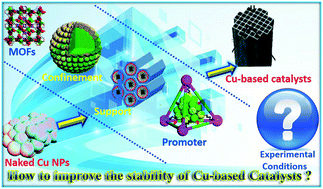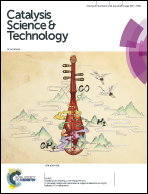Recent progress in improving the stability of copper-based catalysts for hydrogenation of carbon–oxygen bonds
Abstract
The quickly increasing demand for sustainable energy and materials requires researchers to develop highly efficient and stable catalytic materials for the hydrogenation of carbon–oxygen bonds into chemicals and fuels. Cu-based catalysts have been attracting tremendous attention in gas-phase catalytic reactions, such as the water-gas shift, CO oxidation and NOx reduction reactions. In particular, the C–O bond hydrogenation reaction is an economical and environmentally friendly way to produce alcohols. However, the instability of Cu-based catalysts has become a great challenge for industrial application. The majority of publications discuss the instability of Cu-based catalysts for reactions involving the hydrogenation of dimethyl oxalate, methyl acetate, furfural, or CO2 to alcohols. This review briefly summarizes the roots of Cu-based catalyst deactivation and introduces five strategies for improving their stability, as well as the evolution of copper species during preparation and reaction and a novel Cu-based catalyst technology.



 Please wait while we load your content...
Please wait while we load your content...